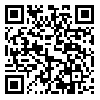Mon, Dec 1, 2025
[Archive]
Volume 18, Issue 3 (11-2004)
Med J Islam Repub Iran 2004 |
Back to browse issues page
Download citation:
BibTeX | RIS | EndNote | Medlars | ProCite | Reference Manager | RefWorks
Send citation to:



BibTeX | RIS | EndNote | Medlars | ProCite | Reference Manager | RefWorks
Send citation to:
FARHADI M, MAHMOUDIAN S, SAMOUDI M, EMAMJOMEH H, DANESHI A. DESIGN AND STRUCTURE OF A NEW DEVICE FOR AUDITORY ELECTRICAL STIMULATION FOR SUPPRESSION OF TINNITUS. Med J Islam Repub Iran 2004; 18 (3) :191-199
URL: http://mjiri.iums.ac.ir/article-1-576-en.html
URL: http://mjiri.iums.ac.ir/article-1-576-en.html
DESIGN AND STRUCTURE OF A NEW DEVICE FOR AUDITORY ELECTRICAL STIMULATION FOR SUPPRESSION OF TINNITUS
From the Research Center of Ear, Nose, Throat, Head & Neck Surgery, Iran University of Medical , farhadi@ent-hns.org
Abstract: (5959 Views)
Auditory Electrical Stimulation for Tinnitus Suppression
Tinnitus is the conscious experience of sound which arises in the head of its
owner, but without a voluntary origin obvious to that person. About 10-15% of all
adults report prolonged spontaneous tinnitus (PST).
There are a lot of methods for suppressing this complaint. One of these methods is
electrical stimulation. Electrical stimulation for tinnitus suppression was investigated
by many authors that reported its effectiveness from 22% by Grahams and Hazell
(1989) to 87% by Portman (1979).
The purpose of the present project was to design and structure a new Auditory
Electrical Stimulation device for tinnitus relief in patients who suffer from tinnitus.
Our other goal was to execute a pilot project by modelling of our new device on
animals.
In this project an instrument for applying Auditory Electrical Stimulation (AES)
is designed. This device consists of two generators: one is a carrier square wave
generator (30 KHz to 100 KHz), the second is another low frequency square signal
(1 Hz through 20 KHz) that has an adjustable duty cycle. The entire user interface is
on PC, and there are a lot of options that the user can adjust.
The PC is connected to a circuit by a serial port and the serial port is isolated from
the other pat1s of the circuit. Modulation can optionally be enabled or disabled. The
amplitude of current flow can vary from 1 microamp to 1000 microamp (lmilli-
Amp) with 1 microamp resolution. The impulse duration can be adjusted (this is a
third pulse generator) by the user from 500 microsec delivered at 1/sec to 2000/sec.
The combined electrical signal has the maximum peak to peak amplitude of 10 V,
which varies to make a constant current through electrodes. A warning device
indicates insufficient skin electrode contact. In addition the impedance between
electrodes can be monitored on PC. There are several parts that increase the safety
of this system. The dimension of the PC board is 11 cm x 14cm. By now the first
version which could be used in hospital and/or clinics is made and could be used by
patients who suffer from tinnitus.
We believe that tinnitus reduction occurred or even disappeared during and after
the treatment period by AES. Our results applying Auditory Electrical Stimulation
(AES) were effective in our many patients who had clinically been identified as
having peripheral or central lesion tinnitus sites. We made a new auditory electrical
stimulation device for tinnitus relief in patients suffering from tinnitus that can do
electrical stimulations. Also, in an experimental study design on rabbits, we had
tested this new device, and evaluated the efficiency to deliver electrical currents and
other capabilities in tinnitus suppression.
Although study comparisons are confounded by differences in success criteria,
subject sampling, methodology and acute tinnitus suppression have been reported in
up to 62.5% of subjects (Mahmoud ian et aI., 2001), AES reduces the effects of
tinnitus several factors could be involved in this reduction, i.e. synchronizing
discharge of auditory nerve fibers, inhibition of the abnormal activity of the cochlear
nerve, the revival neural coding and positive neural plasticity.
Type of Study: Original Research: Clinical Science |
Subject:
Surgery
Send email to the article author
| Rights and permissions | |
 |
This work is licensed under a Creative Commons Attribution-NonCommercial 4.0 International License. |





